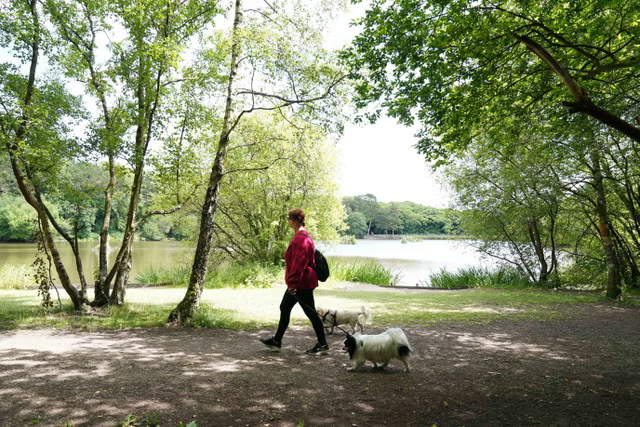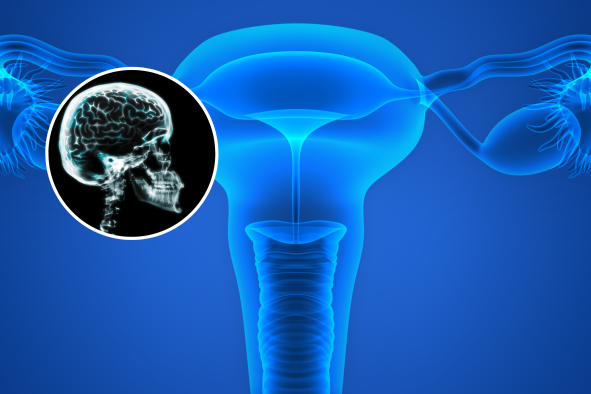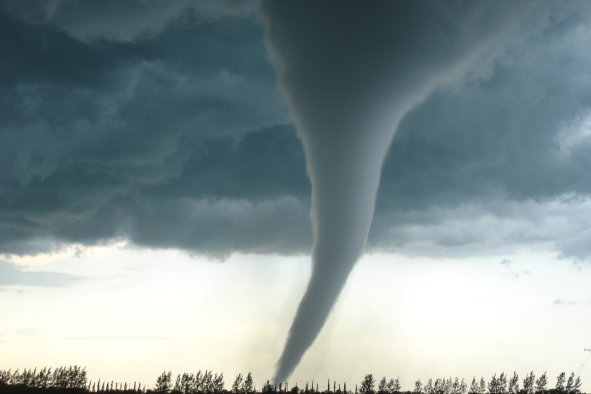An extraordinary new species of horned dinosaur has been discovered in northern Montana, a study published Thursday reported.
The previously unknown species, named Lokiceratops rangiformis, is among the largest and most ornate horned dinosaurs ever found, featuring two huge blade-like horns on the back of its frill.
Researchers estimate that the dinosaur, which lived more than 78 million years ago, measured about 22 feet in length and likely weighed about 11,000 pounds. It was a four-legged herbivore, with a giant upper and lower beak, two long horns protruding from above its eyes, and a roughly 3-foot-long frill with two huge, blade-like horns extending from the back of its head. Its mouth was filled with more than 200 teeth.
"Lokiceratops was a quadrupedal herbivore, likely behaving similar to rhinos and elephants today. It used its sharp beak to clip and cut tough vegetation, and a battery of cheek teeth to slice them," study co-leader Joseph Sertich, a paleontologist with the Smithsonian Tropical Research Institute and Colorado State University, told Newsweek.
"It likely used its frill and horns as ornaments for display, either to attract mates or intimidate rivals, or to help it identify members of its own species."
The study describing the dinosaur, published in the journal PeerJ, is based on a highly fragmented skull and partial skeleton
"The original skull of Lokiceratops was found in many pieces," Sertich said. "The skull had been broken prior to fossilization and deposited in a jumble. While each individual piece was well preserved, including intricate surface detail, the entire skull had to be meticulously reassembled and reconstructed."
The remains were originally unearthed near the United States-Canada border in Kennedy Coulee—a dry gorge or valley. More than 78 million years ago, this landscape was along the eastern shore of Laramidia—an island continent representing what is now the western part of North America. The continent formed roughly 100 million years ago when a large, inland sea, known as the Western Interior Seaway, split North America into two landmasses.
"The northern region of Montana, along the U.S.-Canada border, was part of an extensive coastal plain sandwiched between the actively rising Rocky Mountains to the west and the coast of the Western Interior Seaway to the east," Sertich said.
"Even though the region today is cool and temperate, the climate 78 million years ago would have been seasonally subtropical, with extensive forests, river floodplains, and lush swamps."
Lokiceratops is a member of a group of horned dinosaurs known as the centrosaurines—part of the wider ceratopsid family. Ceratopsids emerged about 92 million years ago and survived until the mass extinction event about 66 million years ago that saw all non-avian dinosaurs disappear.
Lokiceratops—thought to be the largest horned dinosaur of its time—appeared at least 12 million years earlier than its famous, albeit distant, cousin Triceratops, which is also a ceratopsid but not a centrosaurine.
"This group [centrosaurines] is well known from 82-72 million years ago, and many of its members sport ornate and bizarre horns on their frills," Sertich said. "Lokiceratops is the largest centrosaurine ever found in North America, demonstrating that horned dinosaurs could become quite large before the emergence of Triceratops, one of the largest known."
Lokiceratops features several unique characteristics that enabled its description as a new species among the centrosaurines. These traits include the absence of a nose horn, the huge, blade-like horns, and a distinct, asymmetric spike in the middle of its frill.
The first part of the new species' name translates as "Loki's horned face"—a reference to the blade-wielding god from Norse mythology.
"This new dinosaur pushes the envelope on bizarre ceratopsian headgear, sporting the largest frill horns ever seen in a ceratopsian," Sertich said in a press release.
The fossil assemblage in which Lokiceratops was found reveals that the new species shared its environment with four other horned dinosaurs, two of them close centrosaurine relatives with similar ornaments—Medusaceratops and Albertaceratops.
"Previously, paleontologists thought a maximum of two species of horned dinosaurs could coexist at the same place and time. Incredibly, we have identified five living together at the same time," study co-author Mark Loewen, a paleontologist at the Natural History Museum of Utah and professor in the Department of Geology & Geophysics at the University of Utah, said in the press release.
"The skull of Lokiceratops rangiformis is drastically different from the other four animals it lived alongside."
Lokiceratops also shared its habitat with a duck-billed dinosaur named Probrachylophosaurus and an unidentified tyrannosaur, as well as other dinosaurs like raptors (dromaeosaurs), dome-headed dinosaurs (pachycephalosaurs) and ostrich mimics (ornithomimids).
Do you have an animal or nature story to share with Newsweek? Do you have a question about paleontology? Let us know via science@newsweek.com.
Disclaimer: The copyright of this article belongs to the original author. Reposting this article is solely for the purpose of information dissemination and does not constitute any investment advice. If there is any infringement, please contact us immediately. We will make corrections or deletions as necessary. Thank you.



